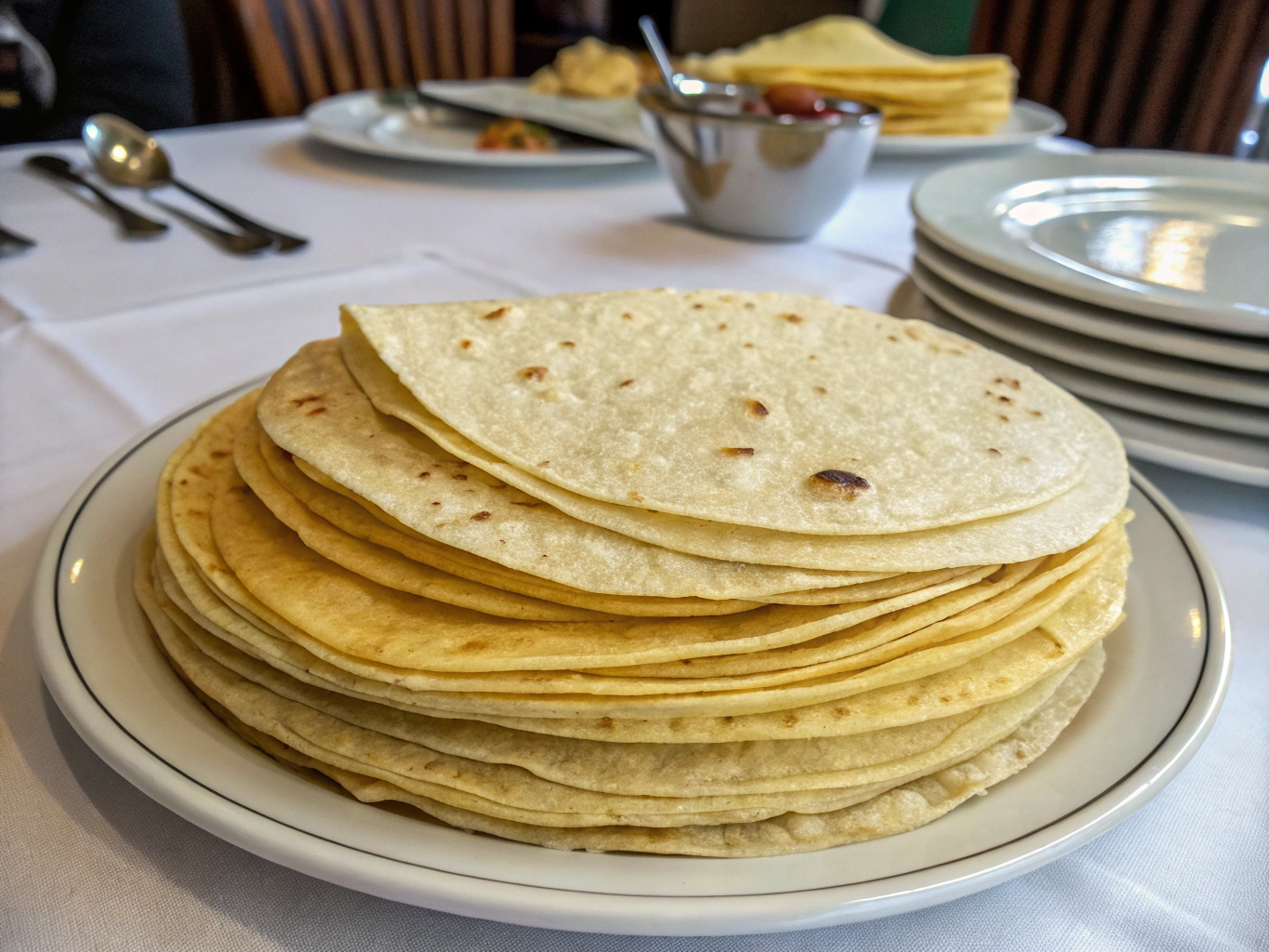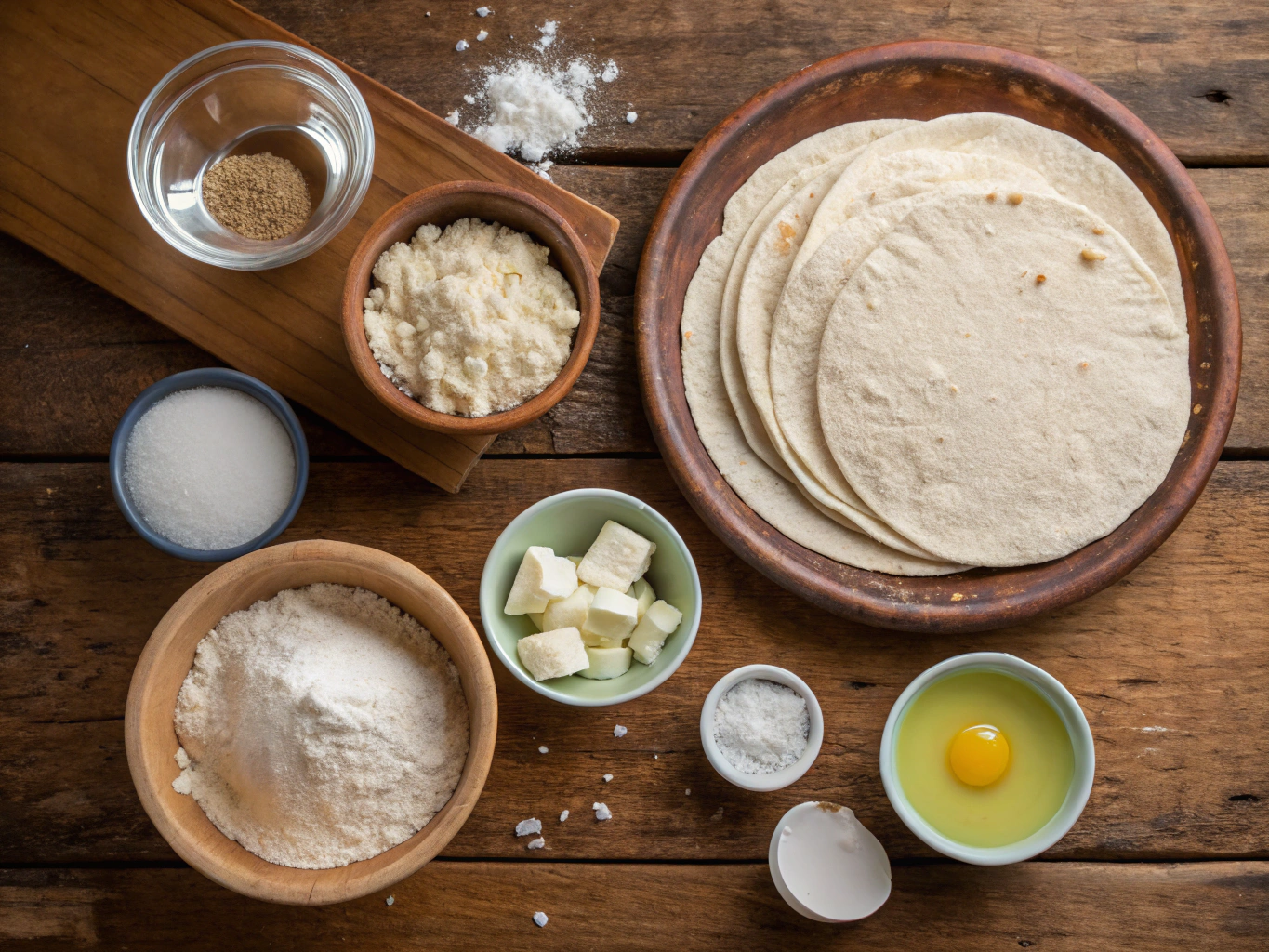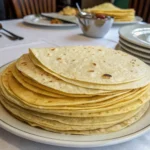
Table of Contents
There’s something special about the aroma of fresh tortillas de harina wafting from the kitchen. Growing up in Northern California with parents who prized garden-fresh meals, Sundays were our sacred culinary sanctuary. While my mom whipped up inventive, plant-forward dishes from humble ingredients, my dad was out in the soil, pulling carrots or trimming herbs.
In my early twenties, I distinctly remember tasting my first homemade tortillas de harina made by my abuela while visiting my best friend’s family in El Paso. Buttery, slightly chewy, and warm from the pan, they were nothing like the supermarket versions I’d known. I was hooked. Fast forward a few years and a plant-based lifestyle later, and I found myself recreating that nostalgic flavor with updated ingredients.
This article is everything I wish I’d known when I first thought, “Hey, maybe I can make tortillas de harina from scratch.” We’ll cover the story behind the tradition, ingredients and preparation, techniques and texture tips, and how these soft flour tortillas fit into a larger plant-based adventure.
The Comfort Food You Didn’t Know You Needed
Why Tortillas de Harina Just Feel Like Home
Tortillas de harina, or flour tortillas, often evoke memories of warmth and togetherness. Unlike the firmer tortillas de maiz, these are soft, flexible, and perfect for wrapping, scooping, and pairing with just about anything—from smoky roasted veggies to simple sautéed greens.
In my kitchen, they’ve become a staple. I make them for casual family dinners or to cradle a crunchy filling like the ones in our callo de hacha tostadas. Tortillas de harina taste distinctly rich and tender, and their slightly puffy surface tells stories of hot griddles and well-worn rolling pins.
Once I understood that tortillas de harina come from a long line of adaptation—responding to different climates and ingredient availability—I felt freer to experiment. They’re rooted in Northern Mexico, where wheat was more accessible than corn. The flour-based dough is less brittle than corn, and the gentle flavor lets bold fillings shine, like the savory-spiced spread I use in this ancho chili sauce.
Not Your Average Store-Bought Tortilla
Commercial tortillas often rely on hydrogenated oils and preservatives. But when you go homemade? It’s a night and day difference. You control everything—from the source of your flour to the fat you use. A touch of olive oil or even avocado oil works charm in my plant-based version, yielding a softer texture and more nuanced flavor.
And here’s the kicker—I’ve served my version of tortillas de harina with everything from lemony roasted papalo mushrooms to Mediterranean fillings like green olive bread stuffing. These fluffy, lightly blistered tortillas know no limits.
In a way, every tortilla made from scratch feels intimate—it’s a hand-rolled act of love. And the beauty? You don’t have to be a trained chef to nail it. Just a little patience, a hot comal or skillet, and the right ingredients.
How to Make Plant-Based Tortillas de Harina at Home

Ingredients List: Simple, Flexible, and Flavorful
Here’s everything you’ll need to make tortillas de harina right in your own kitchen. I’ve also included a couple of substitutions to work with what you’ve got.
| Ingredient | Notes and Substitutions |
|---|---|
| 2 cups all-purpose flour | Can sub with 50/50 whole wheat for nuttier flavor |
| 1/2 tsp baking powder | Optional, helps make them puffier |
| 1/2 tsp salt | Sea salt preferred for extra flavor |
| 1/4 cup oil | Use avocado, olive, or refined coconut oil |
| 3/4 cup warm water | Adjust slightly depending on flour type |
Timing: From Start to Finish—Quick, Reliable, and Satisfying
Making tortillas doesn’t take hours. In fact, this recipe is quicker than most bake-from-scratch comforts and takes 20% less time than the average tortilla recipe thanks to a gentle resting phase.
- Prep time: 10 minutes
- Resting time: 20 minutes
- Cooking time: 20 minutes
- Total time: 50 minutes
You’ll have enough time to whip up a batch of pasilla pepper salsa while the dough rests, adding a smoky kick to your wraps.
Step-by-Step Instructions
- In a mixing bowl, whisk flour, baking powder, and salt together.
- Add oil and stir until mixture becomes crumbly.
- Slowly add warm water while mixing by hand or with a spoon until a dough forms.
- Knead for 5–7 minutes until smooth and soft. Let it rest, covered, for 20 minutes.
- Divide dough into 8 equal pieces and roll each into a small ball.
- On a lightly floured surface, roll each ball into a thin 6–8 inch circle.
- Heat a cast-iron skillet or griddle on medium-high. Place one tortilla on the hot surface and cook for 30–60 seconds per side, pressing gently with a spatula.
- Stack cooked tortillas in a clean towel to keep them warm and pliable.
For more texture control and tips on adjusting flour ratios, check MyMarket’s Farines et Céréales collection for a variety of flours to experiment with at home.
Mastering the Texture and Taste of Tortillas de Harina
What Makes Them Puff and Stretch Just Right?
Getting perfect tortillas de harina isn’t just luck—it’s technique. Resting the dough is non-negotiable. It relaxes the gluten, which means your tortillas will roll out thinner and puff more evenly on the skillet.
The reason they puff? That bit of baking powder and proper cooking temperature. If your pan’s too cool, they dry out before they have a chance to rise. My rule: a hot, dry skillet and never walking away during the 60-second cook time.
For flavor? That’s where your fat choice comes in. Olive oil adds depth. Coconut gives a neutral profile. I even once used lemon-infused oil for a summer taco night, inspired by our pasta with black olives flavors—omega-3 meets artisan wrap.
Pairing Your Tortillas with Plant-Based Fillings
These tortillas are like edible blank canvases. One of my favorite pairings is sautéed mushrooms with papalo leaves—flavor-packed and herb-forward, just like the papalo tacos we featured last spring.
Try stuffing them with black beans, roasted peppers, and a dollop of ancho chili paste. Or keep it simple: slather with fresh guacamole and a squeeze of lime.
When you’re experimenting with fillings, texture matters. Crunchy slaw or pickled onions add contrast to the soft tortilla base. Whether you’re going full fusion or sticking traditional, you’ll find your groove.
Appreciating the Legacy and Adaptability of Tortillas de Harina
Harina Tortilla Roots and Cultural Evolution
Tortillas de harina are more than just an ingredient; they’re a testament to the adaptability of Mexican cuisine. They rose to prominence in Northern Mexico and Texas where wheat—and not corn—was more readily available. Over time, they evolved in each household, shaped by geography, tradition, and necessity.
Understanding this hybrid legacy is what convinced me it’s okay to swap lard for plants or whole wheat for white flour. Food changes, and that’s beautiful. Just like ancho chili substitutes adapt to flavor gaps, tortillas adapt to kitchens around the world.
Making Space for Tradition on a Plant-Based Table
One takeaway? You don’t need to sacrifice tradition to embrace plant-based cooking. Whether it’s smoky ancho, tender zucchini, or fluffy flour tortillas, there’s room in the kitchen for both heritage and innovation.
Home-cooked tortillas remind us that while cooking is cultural, it’s also deeply personal. And when your family gathers at the table, biting into soft, warm homemade goodness, you’re not just eating. You’re connecting.
Don’t hesitate to twist the classics. As long as there’s intention behind your substitution, you’re honoring the essence of the dish.
FAQs
What is harina tortilla?
A tortilla de harina is a soft flour tortilla typically made from wheat flour, fat (oil), baking powder, salt, and water. They’re commonly used in Northern Mexican and Tex-Mex dishes.
Are tortillas de maiz healthier than tortillas de harina?
Corn tortillas generally have fewer calories and less fat than flour tortillas, making them a slightly healthier option nutrient-wise. However, flour tortillas are more flexible, richer in taste, and better suited for certain fillings.
What is the best harina for tortillas?
The best harina for tortillas de harina is unbleached, all-purpose flour. You can also blend in whole wheat flour for a nuttier taste and more fiber.
Why would they use tortilla de harina instead of tortilla de maiz?
Flour tortillas are used when a softer, more pliable wrap is needed—think burritos, quesadillas, and dishes where foldability is crucial. Their neutral taste complements a wide variety of bold or creamy fillings.
Conclusion
Making tortillas de harina is more than just a recipe—it’s a journey filled with family stories, cultural discoveries, and delicious memories. From your first warm press to your last bite filled with chili-spiced lentils or greens, you’re creating more than just food. You’re shaping a connection between past and future, tradition and innovation.
So dust that counter, gather your ingredients, and roll out something remarkable tonight. Whether you stuff them, stack them, or simply savor them with a splash of salsa, tortillas de harina will quickly become your soul-satisfying favorite.
Print
Homemade Tortillas de Harina
- Total Time: 50 minutes
- Yield: 8 tortillas 1x
- Diet: Vegan
Description
Soft, chewy, and rich, these homemade flour tortillas are a plant-based twist on a Northern Mexican staple. Perfect for wraps, tacos, or dipping, they’re easy to make and deeply satisfying.
Ingredients
2 cups all-purpose flour
1/2 tsp baking powder
1/2 tsp salt
1/4 cup oil (avocado, olive, or refined coconut)
3/4 cup warm water
Instructions
1. In a mixing bowl, whisk flour, baking powder, and salt together.
2. Add oil and stir until mixture becomes crumbly.
3. Slowly add warm water while mixing by hand or with a spoon until a dough forms.
4. Knead for 5–7 minutes until smooth and soft. Let it rest, covered, for 20 minutes.
5. Divide dough into 8 equal pieces and roll each into a small ball.
6. On a lightly floured surface, roll each ball into a thin 6–8 inch circle.
7. Heat a cast-iron skillet or griddle on medium-high. Place one tortilla on the hot surface and cook for 30–60 seconds per side, pressing gently with a spatula.
8. Stack cooked tortillas in a clean towel to keep them warm and pliable.
Notes
You can substitute 1 cup of the all-purpose flour with whole wheat for a nuttier flavor.
For a softer texture, add an extra tablespoon of oil.
Dough must rest for gluten relaxation—don’t skip it.
Use a very hot, dry skillet to ensure the tortillas puff properly.
These pair beautifully with sautéed mushrooms, roasted veggies, or smoky ancho chili paste.
- Prep Time: 10 minutes
- Cook Time: 20 minutes
- Category: Bread
- Method: Stovetop
- Cuisine: Mexican
Nutrition
- Serving Size: 1 tortilla
- Calories: 130
- Sugar: 0g
- Sodium: 122mg
- Fat: 5g
- Saturated Fat: 0.5g
- Unsaturated Fat: 4.5g
- Trans Fat: 0g
- Carbohydrates: 18g
- Fiber: 1g
- Protein: 2.5g
- Cholesterol: 0mg
Keywords: plant-based tortillas, flour tortillas, homemade, vegan, Mexican bread
